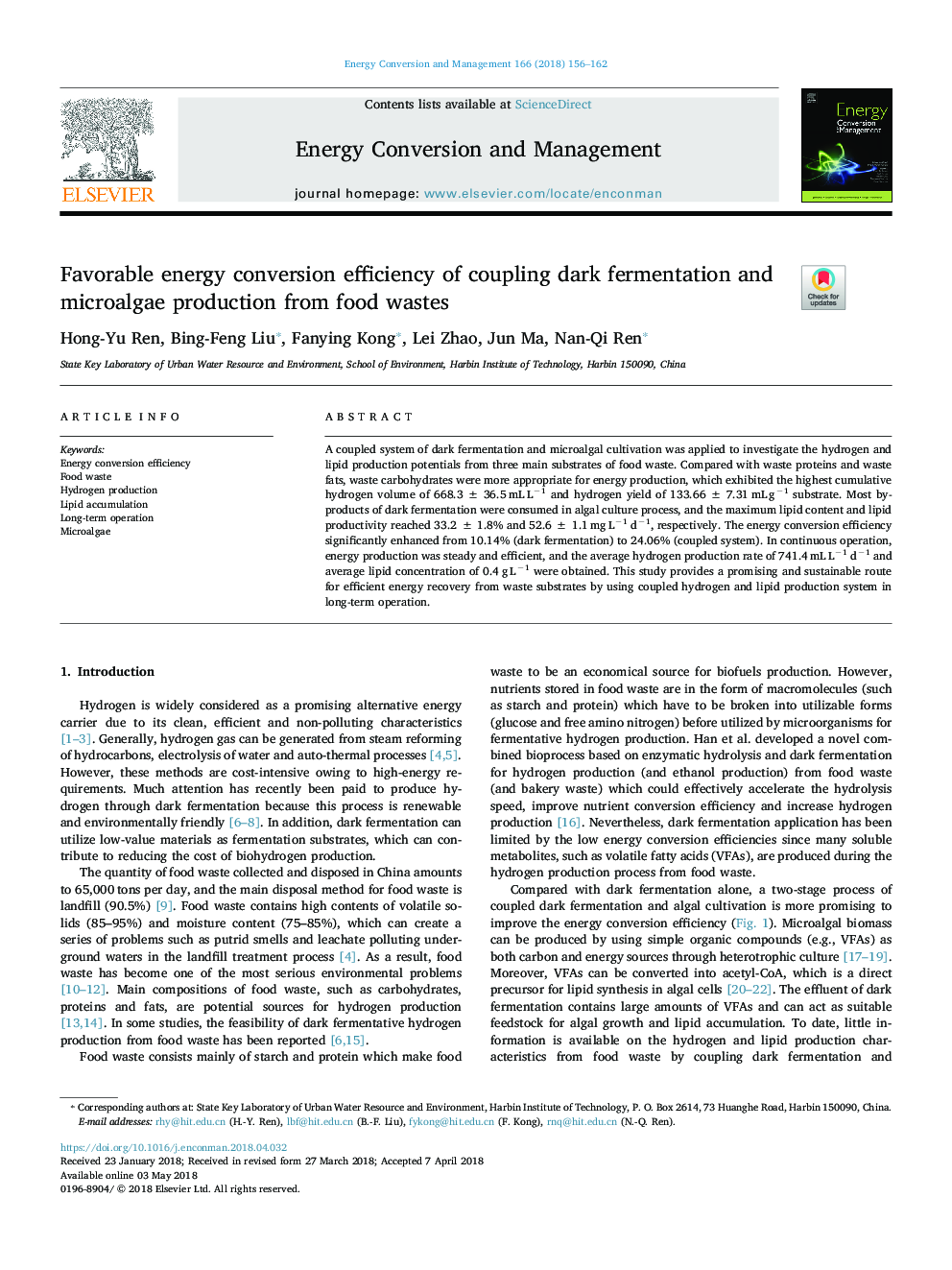| Article ID | Journal | Published Year | Pages | File Type |
|---|---|---|---|---|
| 7158416 | Energy Conversion and Management | 2018 | 7 Pages |
Abstract
A coupled system of dark fermentation and microalgal cultivation was applied to investigate the hydrogen and lipid production potentials from three main substrates of food waste. Compared with waste proteins and waste fats, waste carbohydrates were more appropriate for energy production, which exhibited the highest cumulative hydrogen volume of 668.3â¯Â±â¯36.5â¯mLâ¯Lâ1 and hydrogen yield of 133.66â¯Â±â¯7.31â¯mLâ¯gâ1 substrate. Most by-products of dark fermentation were consumed in algal culture process, and the maximum lipid content and lipid productivity reached 33.2â¯Â±â¯1.8% and 52.6â¯Â±â¯1.1â¯mgâ¯Lâ1â¯dâ1, respectively. The energy conversion efficiency significantly enhanced from 10.14% (dark fermentation) to 24.06% (coupled system). In continuous operation, energy production was steady and efficient, and the average hydrogen production rate of 741.4â¯mLâ¯Lâ1â¯dâ1 and average lipid concentration of 0.4â¯gâ¯Lâ1 were obtained. This study provides a promising and sustainable route for efficient energy recovery from waste substrates by using coupled hydrogen and lipid production system in long-term operation.
Keywords
Related Topics
Physical Sciences and Engineering
Energy
Energy (General)
Authors
Hong-Yu Ren, Bing-Feng Liu, Fanying Kong, Lei Zhao, Jun Ma, Nan-Qi Ren,
